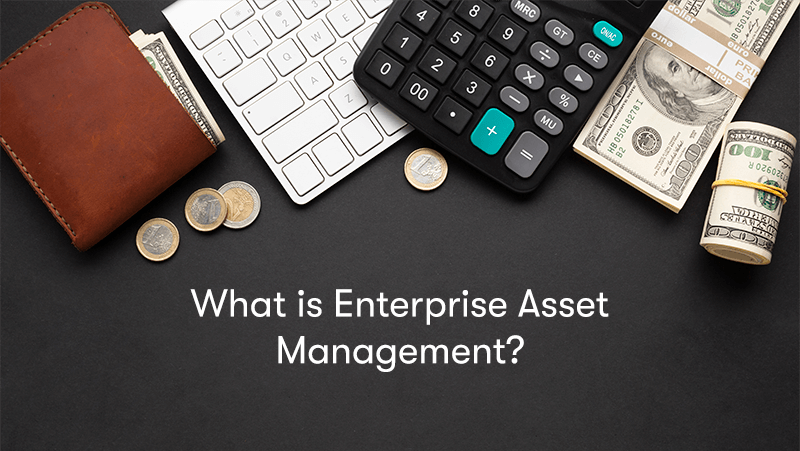What is Enterprise Asset Management (EAM)?
Welcome to our in-depth exploration of Enterprise Asset Management (EAM), a pivotal aspect of modern organisational strategy. In today's asset-intensive business environment, understanding EAM is crucial for companies seeking to maximise the value and lifespan of their physical assets.
EAM goes beyond mere maintenance, encompassing a holistic approach to managing the entire lifecycle of an organisation's assets. This includes acquisition, utilisation, maintenance, and disposal, ensuring that these assets serve their intended purpose efficiently and effectively.
In this blog, we will delve into the core components of EAM, its significance in various industries, and how it integrates with overall business operations, providing a comprehensive guide to this essential business practice. Stay tuned as we unlock the intricacies of EAM!
What is Enterprise Asset Management (EAM)?
Enterprise Asset Management is a system businesses and organisations use to manage, maintain, and control their physical assets and infrastructure throughout their entire lifecycle. This includes the planning, design, procurement, operations, maintenance, and disposal of assets. The main objective of EAM is to optimise the quality and utilisation of assets while minimising costs and mitigating risks associated with owning them. Critical components of EAM typically include:
Asset Lifecycle Management
This involves tracking and managing the entire lifecycle of an asset, from its acquisition to disposal. This helps in optimising the performance and extending the life of assets.
Maintenance Management
EAM systems often include tools for scheduling and executing maintenance tasks to ensure assets are kept in optimal condition.
Work Order Management
It handles the creation, assignment, and tracking of work orders for maintenance and repair tasks.
Inventory Management
This includes managing spare parts, tools, and other materials needed for asset maintenance.
Asset Performance Management
Monitoring the performance of assets to ensure they are operating efficiently and effectively.
Reporting and Analytics
Providing insights into asset performance, maintenance costs, and other key metrics.
EAM systems are critical in industries with significant investments in physical assets, such as manufacturing, utilities, transportation, and government. By effectively managing these assets, organisations can improve uptime, reduce costs, enhance safety, comply with regulations, and achieve better financial performance.
Why is Enterprise Asset Management So Important?
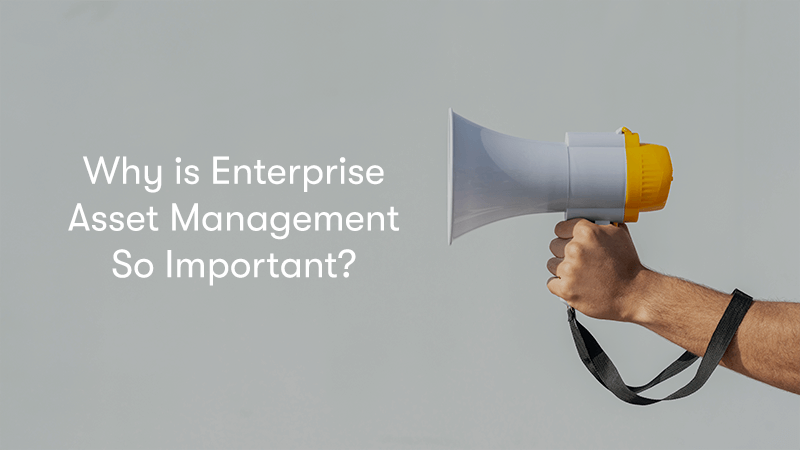
Enterprise Asset Management is crucial for organisations to manage their physical assets efficiently and effectively. Here are several reasons why EAM is so important:
Optimises Asset Lifespan and Performance
EAM helps organisations maximise the lifespan and performance of their assets. By regularly maintaining and monitoring assets, EAM ensures they operate at peak efficiency for as long as possible.
Reduces Costs
Proper asset management leads to reduced costs in several ways. It minimises the need for expensive emergency repairs, lowers the frequency of downtime, and extends the life of assets, reducing the need for early replacements.
Enhances Decision Making
EAM provides valuable data and insights into asset performance and maintenance needs. This data aids in making informed decisions about asset utilisation, maintenance schedules, and investments.
Improves Safety and Compliance
Regular maintenance and inspections of assets ensure they are safe to use and comply with relevant safety and industry regulations. This is crucial in industries like manufacturing, energy, and transportation.
Increases Uptime and Reliability
Well-maintained assets are less likely to break down, ensuring they are available when needed. This reliability is essential for maintaining productivity and meeting customer demands.
Facilitates Strategic Planning
EAM systems can forecast future asset needs and maintenance requirements, helping in strategic planning and budgeting.
Supports Sustainability Efforts
Efficient asset management can contribute to sustainability by reducing waste, optimising energy use, and extending the life of assets, which in turn minimises environmental impact.
Enhances Customer Satisfaction
Reliable assets mean fewer delays and interruptions, which leads to better service quality and customer satisfaction.
Integrates with Other Systems
EAM can integrate with other business systems (like ERP or HR systems) for a more comprehensive approach to organisational management.
Adapts to Changing Needs
EAM systems can adapt to the changing needs of an organisation, whether it's scaling up operations, introducing new technologies, or complying with new regulations.
EAM plays a critical role in ensuring that an organisation's assets are managed efficiently, safely, and cost-effectively, contributing significantly to the overall success and sustainability of the organisation.
How Does EAM Work in Practice?

Enterprise Asset Management, in practice, involves a combination of processes, technologies, and policies to manage and maintain an organisation's physical assets. Here's how EAM typically works in a practical setting:
Asset Inventory and Records
The first step is to create a comprehensive inventory of all physical assets. This includes detailed records of each asset's specifications, location, value, and lifecycle stage.
Condition Monitoring and Assessment
Regular assessments are conducted to determine the condition of the assets. This may involve physical inspections, sensor-based monitoring, or other diagnostic techniques to assess wear and tear, performance, and potential risks.
Maintenance Management
EAM systems schedule, track, and manage maintenance activities. This includes routine maintenance, repairs, and major overhauls. The system often uses a combination of preventive, predictive, and reactive maintenance strategies.
Work Order Management
When maintenance is required, the EAM system generates and tracks work orders. These orders detail what work needs to be done, who should do it, the timeline, and the required materials and tools.
Spare Parts and Inventory Management
EAM ensures that the necessary spare parts and materials are available when needed. This includes managing stock levels, reordering supplies, and tracking inventory usage.
Performance Analysis
EAM systems collect and analyse data on asset performance. This can include metrics like uptime, failure rates, and maintenance costs, which help identify trends and improvement areas.
Lifecycle Management
EAM tracks assets throughout their entire lifecycle, from acquisition to disposal. This includes decisions on refurbishing, upgrading, or replacing assets based on cost, performance, and strategic considerations.
Regulatory Compliance and Safety
EAM helps ensure compliance with industry standards and regulatory requirements, particularly in industries where asset performance is closely tied to safety and environmental regulations.
Reporting and Documentation
The system generates reports on various aspects of asset management, providing insights into performance, costs, maintenance schedules, and other critical factors.
Integration with Other Systems
EAM often integrates with other enterprise systems like ERP (Enterprise Resource Planning), financial systems, and HR management systems for a holistic approach to organisational management.
Mobile and Remote Access
Modern EAM systems provide mobile and remote access capabilities, allowing maintenance staff and managers to access real-time data and perform tasks even in the field.
In practice, EAM is a dynamic and ongoing process. It requires the collaboration of various departments, from finance and operations to maintenance and IT. The goal is to ensure that assets are available, reliable, and efficient, contributing to the organisation's overall performance and objectives.
What is the Main Goal of EAM?
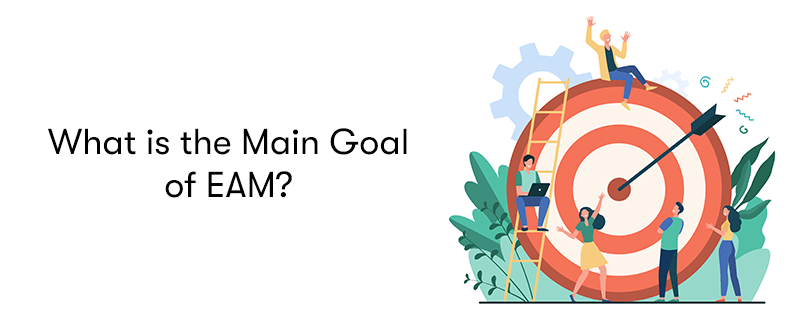
The main goal of Enterprise Asset Management is to optimise the management and maintenance of an organisation's physical assets throughout their entire lifecycle. This goal encompasses several key objectives:
Maximising Asset Performance and Lifespan
EAM aims to ensure that all assets perform optimally for as long as possible, extending their useful life and reducing the need for premature replacement.
Minimising Operational Costs
By effectively managing assets, EAM helps reduce costs associated with repairs, downtimes, and inefficient operations. Regular maintenance and proactive asset management lead to lower overall costs.
Enhancing Asset Reliability and Availability
Ensuring that assets are reliable and available when needed is critical for uninterrupted operations and service delivery. This reliability is crucial for meeting production targets and customer expectations.
Ensuring Compliance and Safety
EAM systems help organisations comply with relevant industry standards, regulations, and safety requirements, reducing the risk of accidents and legal issues.
Supporting Informed Decision Making
By providing comprehensive data on asset performance, maintenance needs, and costs, EAM enables better decision-making regarding asset investments, maintenance strategies, and operational improvements.
Improving Efficiency and Productivity
Efficient asset management leads to streamlined operations, reduced waste, and improved productivity.
Facilitating Strategic Planning and Future Investments
EAM provides insights and forecasts that aid in long-term strategic planning, including future asset investments, budgeting, and resource allocation.
The overarching goal of EAM is to align the management of physical assets with the broader strategic objectives of the organisation, ensuring that assets contribute effectively to the organisation's success and sustainability.
What is the Lifecycle of EAM?
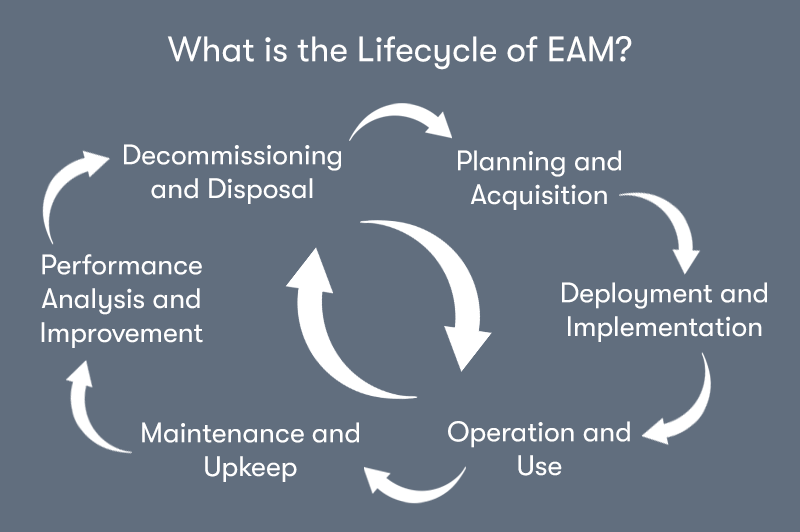
The lifecycle of Enterprise Asset Management typically encompasses several stages, each focusing on different aspects of managing an organisation's physical assets. These stages are:
Planning and Acquisition
Planning: Identifying the need for a new asset based on organisational requirements or strategic goals.
Acquisition: Selecting and procuring the asset. This includes cost considerations, performance, compatibility with existing systems, and future needs.
Deployment and Implementation
Deployment: Installing the asset and integrating it into existing operations.
Implementation: Ensuring that the asset is properly set up and staff are trained in its use.
Operation and Use
Operation: Day-to-day use of the asset in business operations.
Monitoring: Continuously monitoring the asset's performance and condition.
Maintenance and Upkeep
Preventive Maintenance: Regular, scheduled maintenance to prevent breakdowns and extend the asset's life.
Corrective Maintenance: Repairs and corrective actions taken in response to issues identified during operation or monitoring.
Performance Analysis and Improvement
Performance Analysis: Evaluating the asset's performance, efficiency, and contribution to organisational goals.
Improvement: Making adjustments or upgrades to improve asset performance or efficiency.
Decommissioning and Disposal
Decommissioning: Taking the asset out of service when it is no longer needed, efficient, or viable.
Disposal: Disposing of the asset in an environmentally responsible manner while considering any potential for recycling or resale.
Throughout these stages, data is collected and analysed to inform decision-making. This includes tracking maintenance history, costs, operational efficiency, and other key performance indicators. The goal is to ensure that each asset is managed effectively from conception until it is retired, aligning with the organisation's overall strategic objectives.
What is Enterprise Asset Management Software?
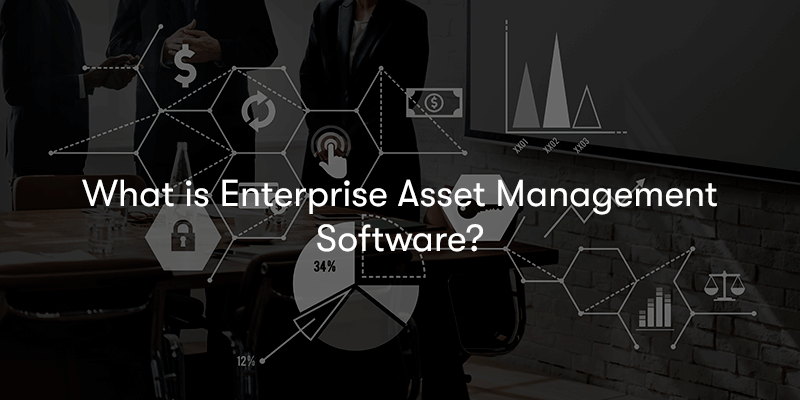
Enterprise Asset Management software is a comprehensive tool that helps organisations manage, maintain, and control their physical assets and infrastructure throughout their entire lifecycle. This software is designed to streamline and automate the processes involved in managing assets, from acquisition to disposal. The key functionalities of EAM software typically include:
Asset Inventory and Documentation
It maintains a detailed inventory of all assets, including their specifications, location, value, and condition. This helps in tracking and managing assets effectively.
Maintenance Management
EAM software schedules, manages, and records maintenance activities. It often includes preventive, predictive, and reactive maintenance functions to ensure assets are kept in optimal condition.
Work Order Management
The software allows for creating, assigning, tracking, and completing work orders. This includes managing requests, scheduling tasks, and documenting the work done.
Asset Lifecycle Management
It tracks and manages assets throughout their entire lifecycle, from planning and acquisition to operation, maintenance, and eventual disposal.
Performance Monitoring
The software monitors and reports on the performance and usage of assets, helping to identify trends, inefficiencies, and opportunities for improvement.
Reporting and Analytics
EAM software provides:
- Detailed reports and analytics.
- Offering insights into asset performance.
- Maintenance costs.
- Lifecycle costs.
- Other key metrics.
Inventory and Procurement
Managing inventory levels of spare parts, tools, and other materials needed for asset maintenance. This can include features for procurement and vendor management.
Integration Capabilities
It often integrates with other business systems, such as ERP (Enterprise Resource Planning), financial, and HR systems, to provide a comprehensive view of organisational resources.
Regulatory Compliance and Safety
The software ensures that assets comply with relevant industry standards, safety regulations, and environmental guidelines.
Mobile and Remote Access
Modern EAM systems offer mobile access, allowing field workers and managers to view and update asset information from anywhere.
Using EAM software, organisations can improve asset reliability, enhance operational efficiency, reduce maintenance costs, ensure compliance with regulations, and make better-informed decisions about their physical assets. This software is particularly valuable in asset-intensive industries such as manufacturing, utilities, transportation, and public infrastructure.
What is CMMS and How Does it Relate to EAM?
CMMS stands for Computerised Maintenance Management System. It is a software tool designed to help organisations manage their maintenance operations. CMMS's primary focus is maintaining and tracking the health of equipment and assets, scheduling maintenance work, and managing maintenance operations and resources. CMMS and EAM (Enterprise Asset Management) are closely related but serve slightly different purposes, lets explore these in more detail:
Scope
CMMS is primarily focused on maintenance management. It handles tasks like scheduling maintenance, managing work orders, tracking repairs, and maintaining records of maintenance activities.
EAM encompasses a broader scope, covering the entire lifecycle of an organisation's physical assets, including acquisition, maintenance, operation, and disposal. While it includes maintenance management as a core component, EAM extends to asset lifecycle management, capital planning, and integration with other enterprise systems.
Functionality
CMMS systems typically provide functionalities such as work order management, preventive maintenance scheduling, maintenance history tracking, inventory control, and sometimes basic reporting and analytics.
EAM systems include all the functionalities of a CMMS but also offer additional features such as asset lifecycle management, more advanced analytics and reporting, strategic planning tools, and often greater integration with other enterprise systems like ERP (Enterprise Resource Planning) and financial systems.
Strategic vs. Operational Focus
CMMS is more operationally focused, helping organisations streamline and optimise maintenance activities.
EAM has a strategic focus, aligning the management of physical assets with the organisation's overall goals and objectives. It provides a more holistic view of assets' role and value in the organisation.
Integration and Scalability
CMMS systems are often standalone solutions focused on the maintenance department's needs.
EAM systems are typically more scalable and more integrated with other business systems, making them suitable for larger organisations with complex asset management needs.
In summary, while CMMS is centred on the maintenance aspects of asset management, EAM provides a comprehensive view of an organisation's assets throughout their entire lifecycle. Many organisations start with a CMMS to address immediate maintenance management needs and may later adopt a more comprehensive EAM system as their asset management strategy matures.
How Does EAM Related to ITAM?
Enterprise Asset Management and IT Asset Management are both crucial disciplines in asset management but focus on different types of assets within an organisation. Let's explore and compare these in more detail:
EAM
EAM focuses on the entire lifecycle management of an organisation's physical assets, such as machinery, vehicles, facilities, and equipment.
It encompasses acquiring, maintaining, operating, and disposing these assets.
EAM aims to maximise asset life, reduce costs, improve efficiency, and ensure compliance with regulations.
It often involves integrating with ERP (Enterprise Resource Planning) systems for broader organisational resource management.
ITAM
ITAM specifically focuses on managing the lifecycle of IT assets, including hardware (like computers, servers, and network devices) and software (like applications, operating systems, and licenses).
It involves tracking and optimising the use of IT assets, ensuring software compliance, managing software licenses, and maintaining hardware.
ITAM aims to control IT costs, manage risks associated with IT assets, and support IT service management activities.
IT Asset Management often integrates with IT service management (ITSM) tools to streamline the management of IT services.
The Relationship Between EAM and ITAM
Complementary Roles: While EAM and ITAM focus on different asset types, they play complementary roles in comprehensive asset management within an organisation.
Shared Objectives: Both aim to improve asset utilisation, reduce costs, and ensure compliance, though in different domains (physical assets for EAM, IT assets for ITAM).
Integrated Approach: In some organisations, EAM and ITAM systems may be integrated to provide a holistic view of all assets. This is particularly relevant for organisations where IT assets are critical for operational processes.
Data and Process Synergy: Both disciplines rely on accurate data collection, asset tracking, and lifecycle management. Best practices in one area can inform the other; in some cases, processes and tools may overlap.
In summary, EAM and ITAM are specialised areas of asset management with distinct but related focuses. An integrated approach to EAM and ITAM can offer a more comprehensive view of an organisation's assets, leading to better decision-making and resource optimisation.
Final Notes on Enterprise Asset Management
In conclusion, Enterprise Asset Management is an essential discipline for optimising an organisation's physical assets' performance, lifecycle, and cost-effectiveness. From initial acquisition to eventual disposal, EAM encompasses various activities, including maintenance, compliance, and strategic asset lifecycle management.
While closely related to CMMS and ITAM, which focus on maintenance and IT assets, respectively, EAM offers a comprehensive view of an organisation's asset portfolio. Implementing an effective EAM strategy, supported by robust EAM software, enables organisations to enhance operational efficiency, ensure safety and compliance, and align asset management with their overall strategic objectives.
As we navigate an increasingly asset-intensive business landscape, the importance of EAM in driving organisational success and sustainability cannot be overstated.


